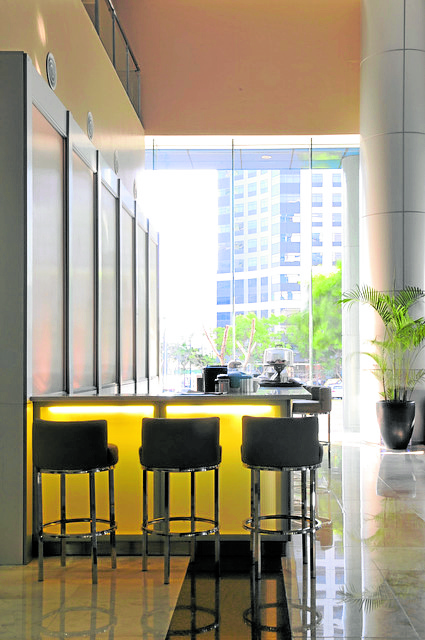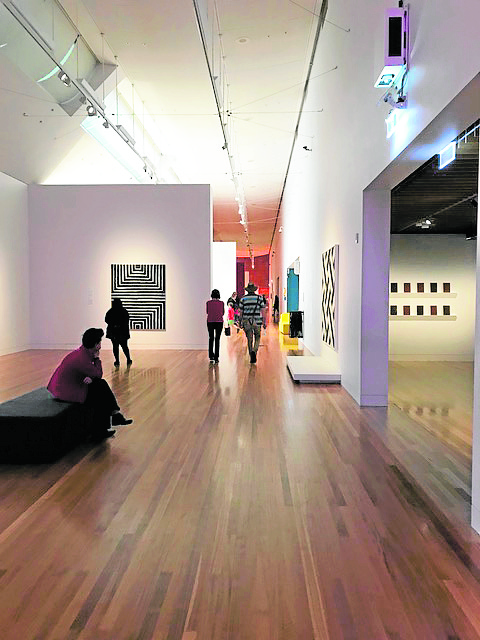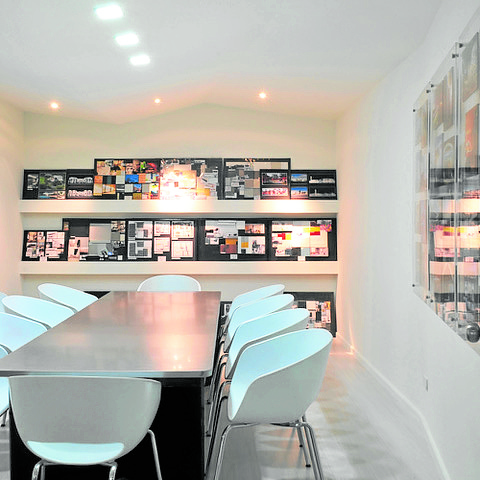Protecting the spaces for social learning

Bars and cafes with seating for the solo diner promote exchanges between server and customer. Such a classic backdrop for movie moments where conversations seem to analyze issues or stir up new patterns of thinking.
Last Wednesday, I spent the afternoon in my office with three of our architects and interior designers. We had to catch up on reviewing drawings for a project, and had more than a hundred sheets to go through. This review session is where we validate designs and details, and check the drawings produced for drafting errors.
It was such a delight to see my colleagues in person—in three-dimensional flesh, instead of the two-dimensional figures on the flat planes of a computer monitor. Of course, the meeting came with some chit-chat on how everyone was doing in the midst of the COVID-19 crisis, and what issues plagued all of us as more people went back to work.
We wore our masks and sat far apart in a conference room that would normally sit 10 persons comfortably. On a usual workday, this meeting space transforms into a little mess hall where some of our team members would lunch together. I hardly sat here during those times, but I would sometimes hear the loud excited voices and snippets of conversation. Some were personal stories while others were funny anecdotes. There were also the horrid tales of the morning commute to work. Some expressed their anxiety over their looming deadlines, or their agony in completing their drawing packages. And one shared how she handled that delicate situation with that one client from hell. While some listened, others volunteered solutions, and everyone chimed in, whether it was a reaction, an opinion, or another point of view. The room is a melting pot for emotions and ideas, big or small, and is essentially our main space for social learning.
In the context of businesses and workplaces, social learning is the exchange of unstructured and informal learning. It is the gathering and exchange of ideas and information within a more social context, either through observation or personal interaction. This could occur in meeting rooms, dining halls, lounge spaces and even hallways.
Outside the workplace, social learning happens in the observation of human activities and in your everyday encounters with random people. It could be through chatting with your favorite “suki” in the wet market, or the short banter with the barista in your favorite café, or even just listening to the conversation between your supermarket cashier and the bagger. It can also be through the engaging stories told by that one charmer you met at the cocktail party. Small talk, yes, but it gives you a window into how other people live.
Article continues after this advertisement
Museums and learning institutions are great places for idea exchanges. Aside from exhibits, events and special exhibits gather an array of minds and stir up a variety of topics during conversations.
Of course there is the virtual social learning platform with social media apps like Facebook, YouTube, Instagram and Twitter. I personally enjoy Instagram as a treasure trove and kaleidoscope of useful information, but I’m happier to learn within the more fluid and spontaneous bubble of a real face-to-face discussion.
Article continues after this advertisementSo, what makes for good social learning spaces?
First, inclusivity: spaces must pull people together regardless of their individual differences. They should provide for any special needs—like access for persons with disabilities—and have elements that are culturally sensitive and respectful. They must be safe spaces for everyone.
Next, they must be flexible, enabling a variety of uses and a cornucopia of activities where furniture arrangements, seating capacities, and the overall design treatment can allow users to interact in a variety of ways. These spaces must also enable fluidity, for effortless movement and the ease of swinging from person to person without going through physical barriers or hindrances.
And lastly, the space must be attractive, comfortable, if not delightful for the eyes. Nobody wants to sit in a space that has no personality and is devoid of any visual excitement and cultural significance.
Many studies have shown that social learning contributes greatly to workplace productivity, employee engagement, and creative thinking. It can help decrease the need for training, as content for structured trainings are often already addressed in some of the relaxed social learning settings. It can vastly improve behavior within an organization as people relate to one another without an overriding concern for hierarchy.
In the larger scheme of things, social learning allows us to acquire knowledge from people who are vastly different from our usual homogenous circle of close friends and relatives, or from the colleagues who sit to the right and left of our workstations everyday. People we have random conversations with can help us learn, understand, and accept ideas that are not in the immediate sphere of our current socio-economic experiences. In the same fashion, we can contribute to those who reside outside our circles as well.
Despite the current physical distancing requirements, we must safely find our way into social learning spaces. Armed with our masks and a lot of caution, we need to be in those spaces that induce random conversations and interaction. Maybe cyberspace will have to do?
As we expand our own understanding of society and seek answers to its pressing problems, we can look at ourselves and our own behavior for some of the answers, and avert a plague of obliviousness at a time when we need it least.
